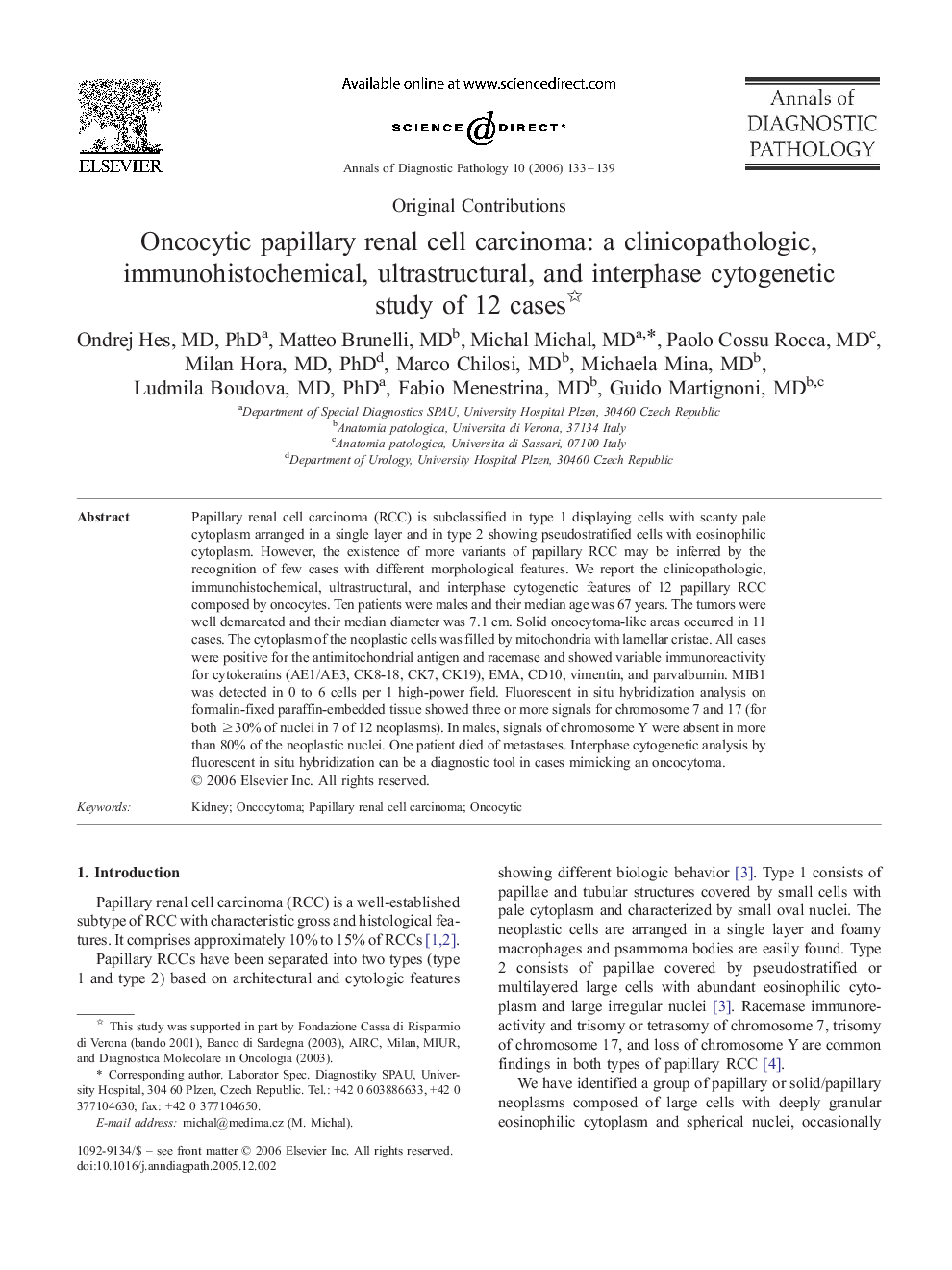| Article ID | Journal | Published Year | Pages | File Type |
|---|---|---|---|---|
| 4130755 | Annals of Diagnostic Pathology | 2006 | 7 Pages |
Papillary renal cell carcinoma (RCC) is subclassified in type 1 displaying cells with scanty pale cytoplasm arranged in a single layer and in type 2 showing pseudostratified cells with eosinophilic cytoplasm. However, the existence of more variants of papillary RCC may be inferred by the recognition of few cases with different morphological features. We report the clinicopathologic, immunohistochemical, ultrastructural, and interphase cytogenetic features of 12 papillary RCC composed by oncocytes. Ten patients were males and their median age was 67 years. The tumors were well demarcated and their median diameter was 7.1 cm. Solid oncocytoma-like areas occurred in 11 cases. The cytoplasm of the neoplastic cells was filled by mitochondria with lamellar cristae. All cases were positive for the antimitochondrial antigen and racemase and showed variable immunoreactivity for cytokeratins (AE1/AE3, CK8-18, CK7, CK19), EMA, CD10, vimentin, and parvalbumin. MIB1 was detected in 0 to 6 cells per 1 high-power field. Fluorescent in situ hybridization analysis on formalin-fixed paraffin-embedded tissue showed three or more signals for chromosome 7 and 17 (for both ≥30% of nuclei in 7 of 12 neoplasms). In males, signals of chromosome Y were absent in more than 80% of the neoplastic nuclei. One patient died of metastases. Interphase cytogenetic analysis by fluorescent in situ hybridization can be a diagnostic tool in cases mimicking an oncocytoma.
